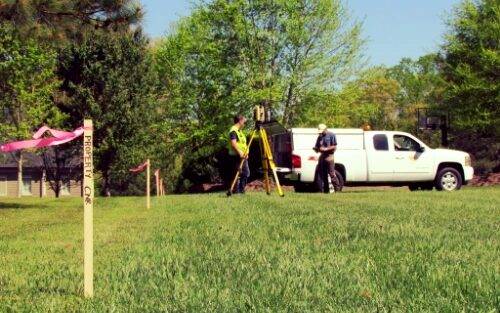A survey is an important document that all purchasers should think about when buying a home. It is a drawing of a property that shows the measurements and boundaries of the lands you are purchasing. Ontario Land Surveyors use calculations they take by physically inspecting and measuring the property to prepare surveys.
A survey reveals the location of the buildings on the land in relation to the actual dimensions of the lot. It should also illustrate improvements on the land, including fences, pools, decks, and easements or rights of way in favour of neighbouring owners or public utility companies. In combination with your deed, a survey tells you what you legally own.
If your purchase is being financed by a mortgage, the lender will often require that you obtain a new survey as a condition of the loan. The lender wants to ensure that its security will be protected if the mortgage loan goes into default and it must sell the property to collect the outstanding debt. The cost of a new survey varies, but you should budget from $600 to $800.
When you purchase a resale home, the Agreement of Purchase and Sale will determine if the vendor is obliged to provide you with a survey. The Agreement will also state if you will be receiving an existing survey or an up-to-date survey. The difference between the two is important. An existing survey is the survey the vendor has in its possession. It may be very old and may not show any additions made to the land since the time the survey was prepared. The lender may not accept this survey. On the other hand, an up-to-date survey shows everything currently built on the property. In most cases, the vendor will provide you with an existing survey when you purchase a resale home. If you purchase a brand new home, the builder will provide you with a brand new survey.
If you are buying a resale home and do not want to pay to obtain a new survey, title insurance can save you money and provide you with broad protection. Title insurance insures an owner’s right to “title” – the right of ownership in real property – and in many cases eliminates the need for a survey as most lenders will accept title insurance in lieu of a survey. Title insurance provides policy holders with the assurance of payment for losses resulting from matters an up-to-date survey would have revealed. In other words, if you obtain title insurance instead of a new survey, the title insurance policy will compensate you for losses you suffer because you did not obtain an up-to-date survey. The other benefit to consider is the cost savings afforded by title insurance. It costs approximately $350 to title insure you and your lender, and between $600 and $800 for a brand new survey. Additionally, a title insurance policy provides other forms of coverage including protection from fraud and forgery. Many lawyers strongly recommend title insurance to their clients.
Despite the cost, there may be good reasons to obtain a survey. If you are considering building an addition or installing a swimming pool, it is helpful to have a survey as well as a title insurance policy. However, if the cost of a survey is too much to bear, a title insurance policy is an excellent way to save money and protect your right to ownership of your home. Before making such important decisions, you should consult with an experienced real estate lawyer


